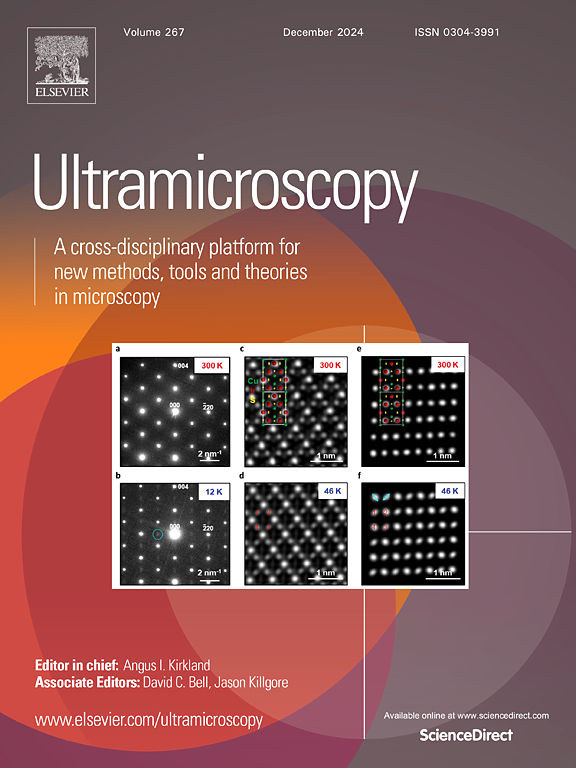利用卷积神经网络对准 TEM 的原理:聚光器孔径对准案例研究
IF 2.1
3区 工程技术
Q2 MICROSCOPY
引用次数: 0
摘要
我们采用一种基于人工智能(AI)的方法,探讨了自动对准透射电子显微镜(TEM)的可能性。在介绍了总体概念之后,我们在对准过程的第一步对该方法进行了测试,这一步涉及将聚光器光圈对准中心。我们建议使用卷积神经网络 (CNN),通过学习来预测在一个步骤中重新对准光圈所需的 x 和 y 移位。学习数据集是在显微镜上使用简化的数字孪生系统自动获取的。我们对不同的模型进行了测试和分析,以选择最佳设计。我们已经开发出一种人类水平的估算器,并打算将其安全地用于所有光圈。类似的过程可用于校准过程中的大多数步骤,只需做出最小的改动,从而使显微镜操作员能够减少执行这项任务所需的时间和培训。该方法还可用于在长时间实验过程中持续校正对准漂移,或在数据采集过程中确保照明条件的一致性。本文章由计算机程序翻译,如有差异,请以英文原文为准。
Principle of TEM alignment using convolutional neural networks: Case study on condenser aperture alignment
The possibility of automatically aligning the transmission electron microscope (TEM) is explored using an approach based on artificial intelligence (AI). After presenting the general concept, we test the method on the first step of the alignment process which involves centering the condenser aperture. We propose using a convolutional neural network (CNN) that learns to predict the x and y-shifts needed to realign the aperture in one step. The learning data sets were acquired automatically on the microscope by using a simplified digital twin. Different models were tested and analysed to choose the optimal design. We have developed a human-level estimator and intend to use it safely on all apertures. A similar process could be used for most steps of the alignment process with minimal changes, allowing microscopists to reduce the time and training required to perform this task. The method is also compatible with continuous correction of alignment drift during lengthy experiments or to ensure uniformity of illumination conditions during data acquisition.
求助全文
通过发布文献求助,成功后即可免费获取论文全文。
去求助
来源期刊

Ultramicroscopy
工程技术-显微镜技术
CiteScore
4.60
自引率
13.60%
发文量
117
审稿时长
5.3 months
期刊介绍:
Ultramicroscopy is an established journal that provides a forum for the publication of original research papers, invited reviews and rapid communications. The scope of Ultramicroscopy is to describe advances in instrumentation, methods and theory related to all modes of microscopical imaging, diffraction and spectroscopy in the life and physical sciences.
 求助内容:
求助内容: 应助结果提醒方式:
应助结果提醒方式:


